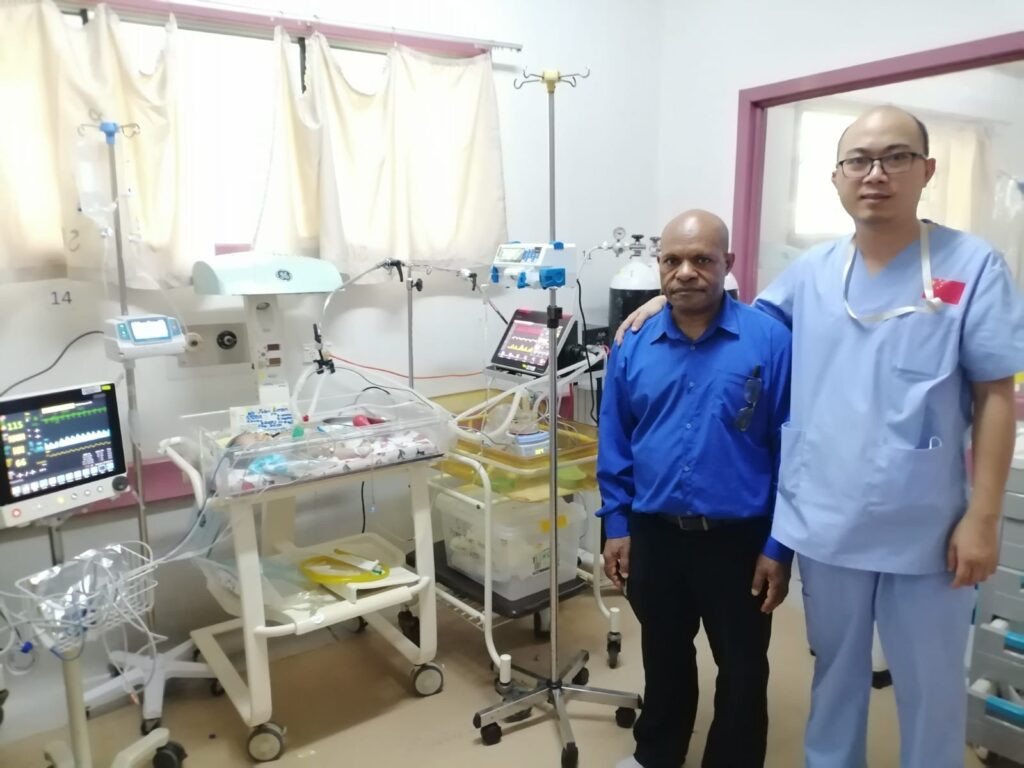A newborn’s life was saved three months ago through the dedicated efforts of the medical team at the Port Moresby General Hospital’s (PMGH) Special Care Nursery (SCN), highlighting the critical role of timely intervention and teamwork in healthcare.
Around 8am on April 13th, the neonatal medical team including Dr. Liu Yin, a neonatologist and member of the 13th Chinese Medical Team, commenced their daily rounds at the special care nursery.
During this time, they noticed a newborn who had been transferred to the special care nursery due to respiratory distress shortly after being born at 38 weeks.
Despite prompt administration of oxygen via the face mask, the baby still had shortness of breath and grunting. Baby was also cyanosed and poorly responsive.
After a quick assessment, the team made the decision that the newborn baby was in a very critical condition with respiratory failure and needed intubation and respiratory support.
Upon further examination of the chest, a clinical diagnosis of congenital diaphragmatic hernia was made based on the presence of bowel sounds in the left chest wall and displaced heart sounds to the right sternal border.
The team immediately prepared all the equipment, intubated the newborn and commenced on the ventilator providing respiratory support (invasive).
The baby’s condition began to stabilize, with improved skin color and responsiveness.
A subsequent chest X-ray confirmed that the baby had a diaphragmatic hernia, a condition that required surgery and breathing support after the operation to ensure survival.
Following the diagnosis, the SCN team led by Dr Gamini Vali and Dr Liu immediately coordinated with the Paediatric surgical and anaesthetic team to formulate a comprehensive treatment plan.
The surgery was successfully performed the next day, and the baby was returned to the ward for ongoing respiratory support.
The pediatric team monitored the baby’s progress and on the fifth postoperative day, a chest X-ray showed satisfactory re-expansion of the left lung.
By the eighth postoperative day, the newborn was switched to non-invasive respiratory support allowing the mother to see her baby for the first time.
On the 11th postoperative day, the baby was taken off the ventilator and switched to intermittent oxygen via nasal cannula.
Two weeks after the surgery, the baby’s wound had fully healed.
By the twenty-first postoperative day, the baby was healthy enough to be reunited with the mother.
Coordinator of the Paediatrics Department, Dr Gwenda Anga described this as an example of collaboration across medical teams and the use of new technology in improving neonatal outcomes.
“We are appreciative of the expertise of the local neonatal, paediatric surgical team led by Dr Jack Mulu and Dr Beena Dagam and paediatric anaesthesia led by Dr Keno Temo together with the support of Dr Liu and the 13th Chinese Medical team,” she stated.

